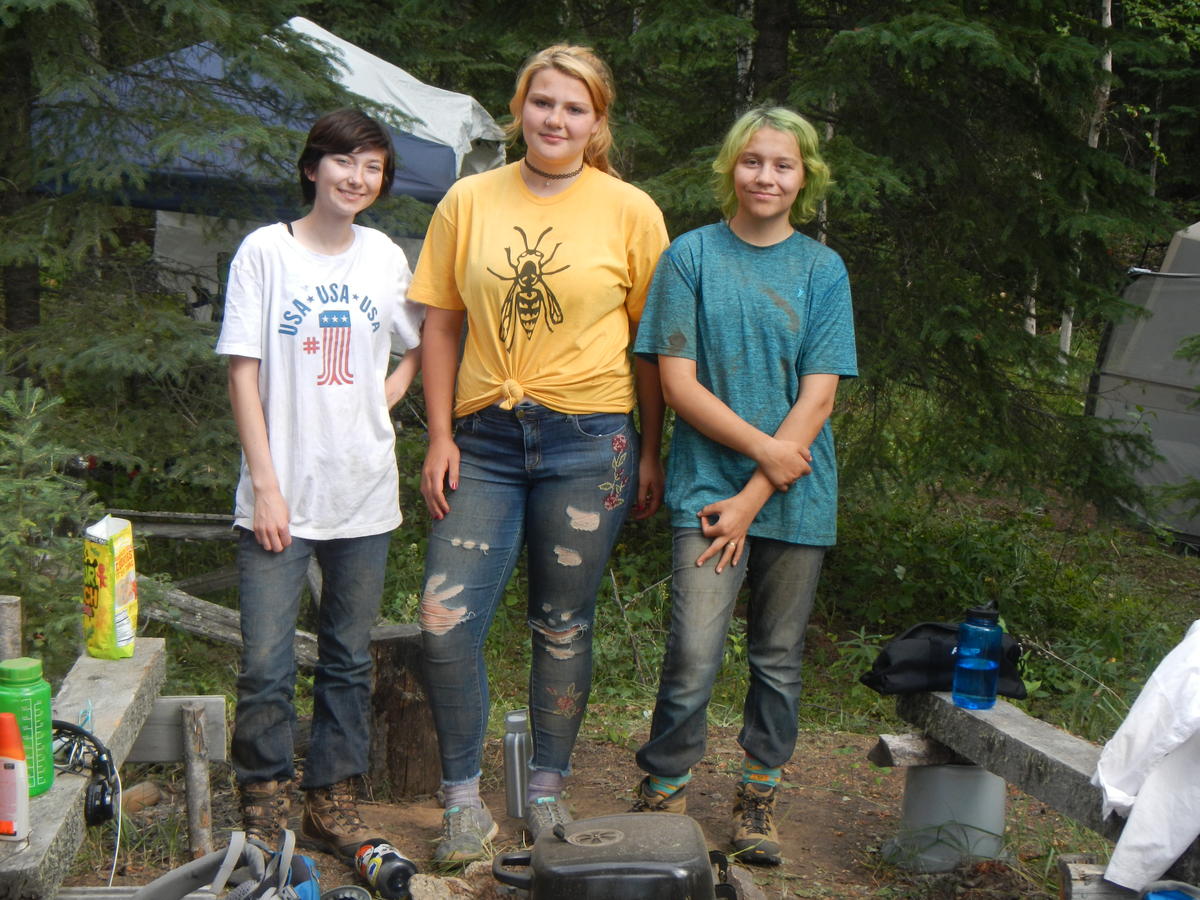ASRA-Projects

The Alaska Summer Research Academy promotes creativity and intellectual curiosity through hands-on, open-ended experiences in STEM (science, technology, engineering, and mathematics). ASRA students engage with mentors and peers to explore scientific concepts, investigate student-driven questions, and solve problems. To find out more visit the Alaska Sumer Research Academy.
ASRA Archaeology 2009

The 2009 ASRA Archaeology module took place primarily in the field and centered around the historic Coal Creek camp. This was the first of a two year project. ASRA students joined a team of archaeologists from the University of Alaska Museum of the North (UAMN), National Park Service (NPS), and the Alaska Bureau of Land Management (AK-BLM) to conduct archaeological excavations at two Historic era sites in Yukon-Charley Rivers National Preserve. The excavations, part of the Snare Creek Historical Archaeology Project, were led by Jim Whitney, Archaeology Collections Manager at UAMN. Robin Mills from the AK-BLM Northern Field Office provided specialized expertise and assistance during the preliminary investigations and testing order to direct future research and prepare for more extensive excavations.
ASRA Archaeology 2010

In the summer of 2010 six ASRA students joined the project led by archaeologists from the University of Alaska Museum of the North (UAMN), National Park Service (NPS), and the Alaska Bureau of Land Management (AK-BLM) to continue archaeological excavations at two Historic era sites in Yukon-Charley Rivers National Preserve.
ASRA Archaeology 2012

During the summer of 2012, the Archaeology Department at the UA Museum of the North (UAMN) participated in the Alaska Summer Research Academy (ASRA) by offering an archaeology module. UAMN partnered with the US Army to provide a teaching site (XMH-00266) located in the Donnelly Training Area near Delta Junction, Alaska. Five students enrolled in the archaeology module and were taught the fundamentals of the archaeology discipline (e.g. excavation techniques, site mapping). After excavating at the site the students were taught proper museum preservation and storage of artifacts/samples (e.g. cataloging, database management) at the museum.
ASRA Archaeology 2013

This module involved a 6-day long field expedition to and from the Simpson archaeological site in the Rosie Creek subdivision. While at the site, we excavated five square meters using tools such as trowels, a total station, GPS technology, and other mapping techniques to document our finds. Once excavations were complete the research team worked at the Archaeology Laboratory at the University of Alaska Museum of the North, where we employed a range of computer software and scientific methods to decipher clues from the artifacts and soils we collected to further understand what occurred at the site and how people lived in the past. Students got to learn how museum professionals preserve and store artifacts and samples so that they are available for future research.
ASRA Archaeology 2014
 2014 ASRA Archaeology Students and Staff
2014 ASRA Archaeology Students and Staff
The 2014 ASRA Archaeology module involved excavations at the early 20th century Chena Townsite, located near Fairbanks on the banks of the Tanana River. Students got to excavate and map features of a once vibrant community.
ASRA Archaeology 2015

This module involved a 6-day long field expedition the Teklanika West archaeological site located in Denali National Park and Preserve. While at the site, we excavated five square meters using tools such as trowels, a total station, and other mapping techniques to document our finds. One of the main goals of this research was to determine the extent and age of the microblade bearing occupation at the site, while better determining the age and stratigraphic separation of the two older occupations. Once excavation were completed, the research team worked at the Archaeology Laboratory at the University of Alaska Museum of the North, where we employed a range of computer software and scientific methods to decipher clues from the artifacts and soils we collected to further understand what occurred at the site and how people lived in the past. Students got to learn how museum professionals preserve and store artifacts and samples so that they are available for future research.
This research project was in cooperation with Denali National Park and Preserve.
ASRA Archaeology 2016
The 2016 ASRA archaeology module will focus on a multi-component Holocene-aged site around Quartz Lake. Additional archaeological sites surrounding Quartz Lake date back to 13,000 years ago, but we know little about how the environment has changed and how humans adapted to this change over the last 6,000 years! This site will give us a window to that time period.
ASRA Archaeology 2017
In the summer of 2017 seven high school students enrolled in the ASRA archaeology module. These students got to experience a week of real archaeological fieldwork at the Klein Site, situated along Quartz Lake. This project was a continuation of the 2016 ASRA archaeology module.
ASRA Archaeology 2018

About the project:
Archaeologists Study How Early Inhabitants Adapted to Quartz Lake's Varying Water
Level
About the ASRA archaeology students:
UAF Program Helps Science-oriented Youths "Broaden Expertise" with Hands-on Learning
If you're interested in being part of the team please check out the ASRA website for more about this module and about ASRA!
